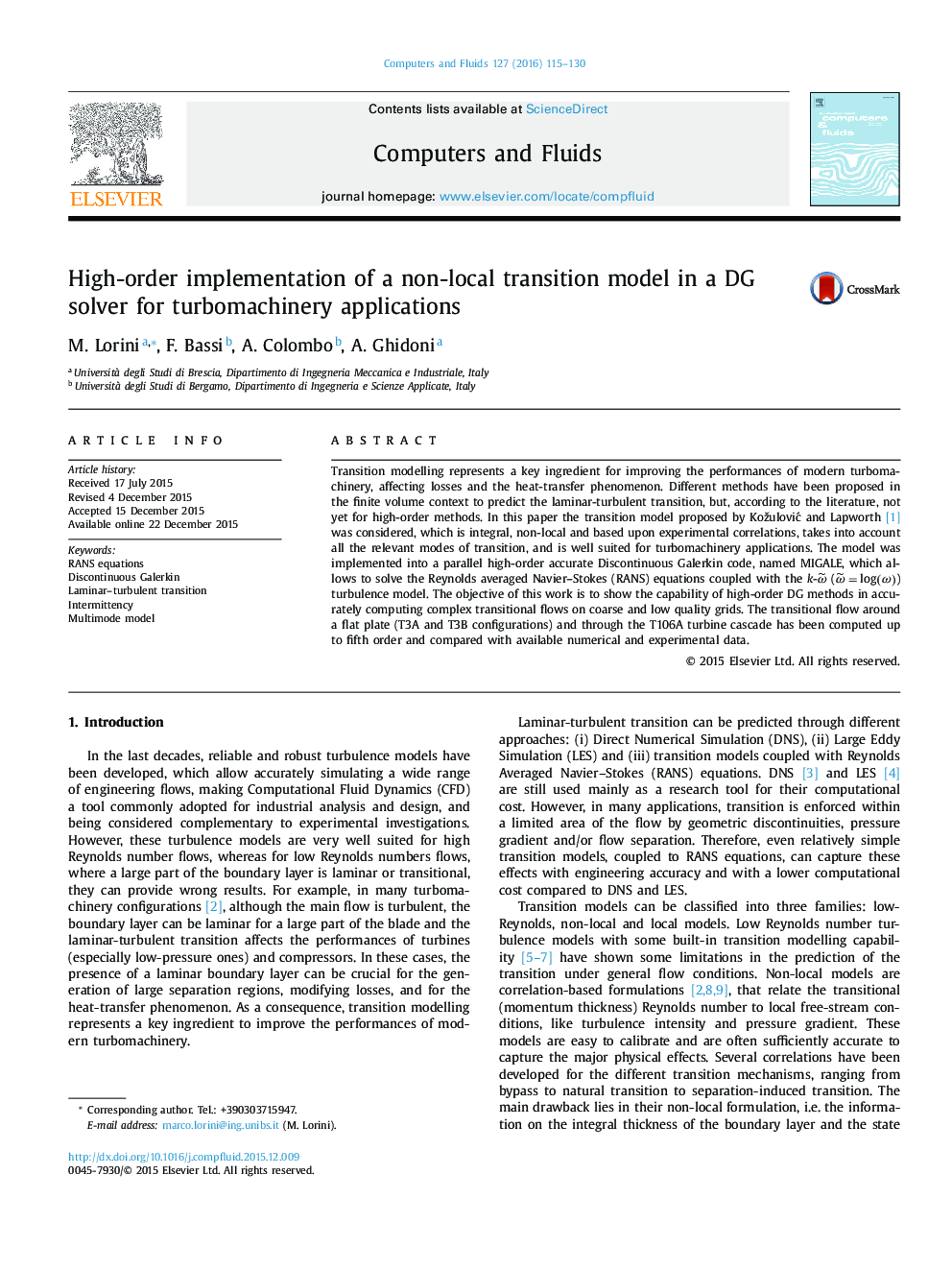| Article ID | Journal | Published Year | Pages | File Type |
|---|---|---|---|---|
| 761420 | Computers & Fluids | 2016 | 16 Pages |
•High-order implementation of a transition model for turbomachinery simulations.•Coupling of the transition model with a non-standard k−ω˜ turbulence model (ω˜=lnω).•Application to zero pressure gradient flat plates and to MTU T106A turbine cascade.•Investigation of the impact of y+y+ value and grid quality on results for the turbine.
Transition modelling represents a key ingredient for improving the performances of modern turbomachinery, affecting losses and the heat-transfer phenomenon. Different methods have been proposed in the finite volume context to predict the laminar-turbulent transition, but, according to the literature, not yet for high-order methods. In this paper the transition model proposed by Kožulović and Lapworth [1] was considered, which is integral, non-local and based upon experimental correlations, takes into account all the relevant modes of transition, and is well suited for turbomachinery applications. The model was implemented into a parallel high-order accurate Discontinuous Galerkin code, named MIGALE, which allows to solve the Reynolds averaged Navier–Stokes (RANS) equations coupled with the k -ω˜ (ω˜=log(ω)) turbulence model. The objective of this work is to show the capability of high-order DG methods in accurately computing complex transitional flows on coarse and low quality grids. The transitional flow around a flat plate (T3A and T3B configurations) and through the T106A turbine cascade has been computed up to fifth order and compared with available numerical and experimental data.
